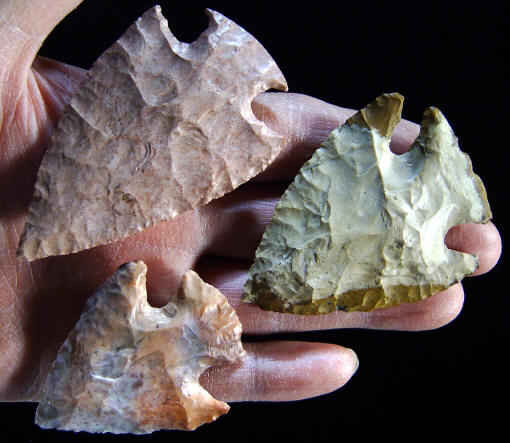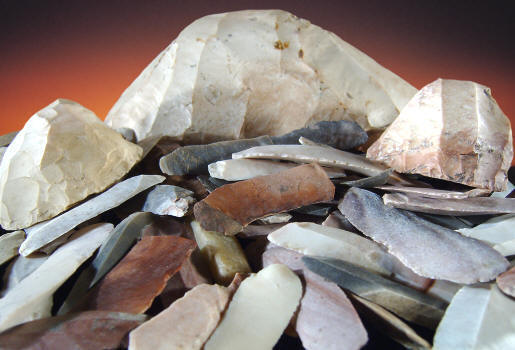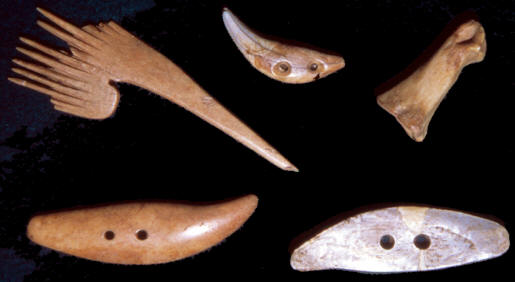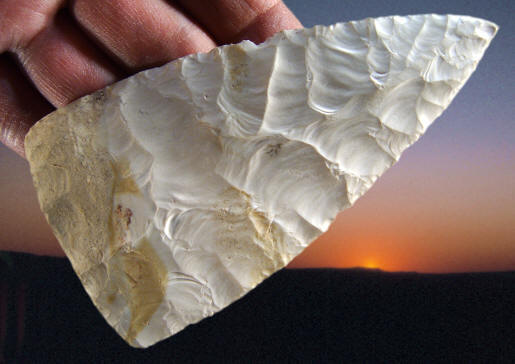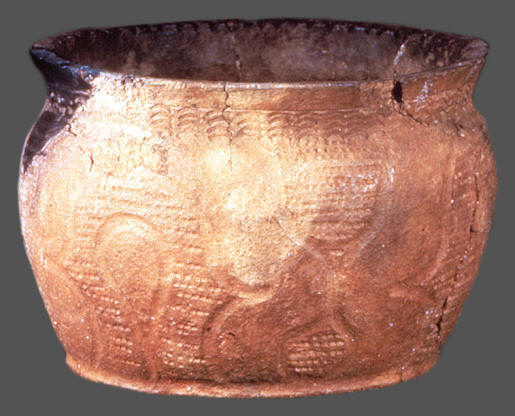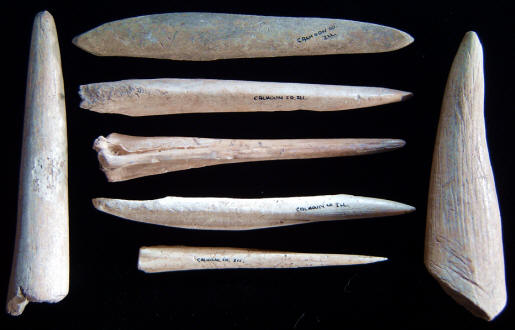|
|
|
Very few complete and well decorated Hopewell pots have been found in Illinois. Only one or two were found on the Snyders site. One of them is illustrated in this article. It was excavated in 1944 by Walter Wadlow from mound C 114. The decoration is identified as Havana Zoned Stamped. |
|
|
The Hopewell people who once lived on the Snyders site left behind large numbers of stone tools. The most common are the lamellar core blades. Archaeologist Anta Montet-White wrote in 1968 that, "The small prismatic blades are the largest component of the Hopewellian industries. Specimens from burial sites show no visible traces of wear. Village assemblages yielded an abundant series of unmodified blades as well as retouched specimens." Large numbers of them were found on the Snyders site. Greg Perino is reported to have found a cache of 22 very large flake tools in a storage pit on the Snyders site. The large size would seem to be a misprint, but they were reported to range in size from 4 3/4 (12 cm) to 6 11/16 inches (17 cm) long and from 1 9/16 (4 cm) to 3 1/8 inches (8 cm) wide (Montet-White: 1968). A normal range in size, for those found on the Snyders site, would be from 1 1/4 inches (3.2 cm) to 2 3/4 inches (7 cm) long. |
|
|
|
|
The Hopewell culture used several different types of colorful cherts. Many of the stone tools found on the Snyders site are colored with shades of pink, red, yellow, tan and gray. Most of the brighter colors, especially the red, pinks and yellows, are caused from heating the stone. This process can dramatically alter both the quality and color of the stone. A piece of Burlington chert that is almost white in color may become red, pink or yellow after heating. Heat treating also makes a piece of chert much more manageable to flake. |
|
|
|
|
The Snyders site is most famous for the projectile and knife form that bears its name. The Snyders point was named by Edward G. Scully in 1951 after the Snyders site. Snyders points are Middle Woodland points that are found over a wide area. They are reported from Michigan, Wisconsin, Illinois, Iowa, Indiana, Ohio, Pennsylvania, New York, northeastern Oklahoma, Missouri, northwestern Arkansas, and southeastern Kansas. Many Snyders points, especially the largest and thinnest examples were probably used as knives. The smaller more narrower versions were probably used as projectile points. One design problem that seems obvious is that they had a propensity to break their "necks." The Snyders site produce more Snyders points with bases broken off than complete examples. |
|
|
|
|
Another point type that is reported from the Hopewell component on the Snyders site are tapered Stemmed points. Perino describes them in 1955 as Gary points but in his 1985 point guide he does not list them from Illinois and comments, "Similar points found elsewhere are not Gary points and should be named according to their local cultural context." Many of the Snyders site stemmed points are probably Dickson points. |
|
|
|
|
Barbed antler projectile points were also found on the Snyders site. They were made from the tips of deer antler tines. The outside surface of the antler was not altered but the ends were hollowed out to insert the shaft of a spear. The ends were also cut at an angle to form a barb. Perino writes that, "The Hopewell at the Snyders site in Illinois made single-barbed antler points." |
|
| CONTINUE ON TO PAGE THREE | |
|
"REFERENCES"
1952, Wadlow, W. L. "The Snyders Site," The Greater St. Louis
Archaeological Society, p. 2. |
|
